A Comprehensive Guide to the Wild Turkey
The wild turkey, a majestic and often underestimated bird, is far more than just a centerpiece for the Thanksgiving table. This native North American species boasts a rich history, complex behaviors, and a vital role within its ecosystems. From its evolutionary origins to its current conservation status, the wild turkey offers a fascinating glimpse into the natural world.
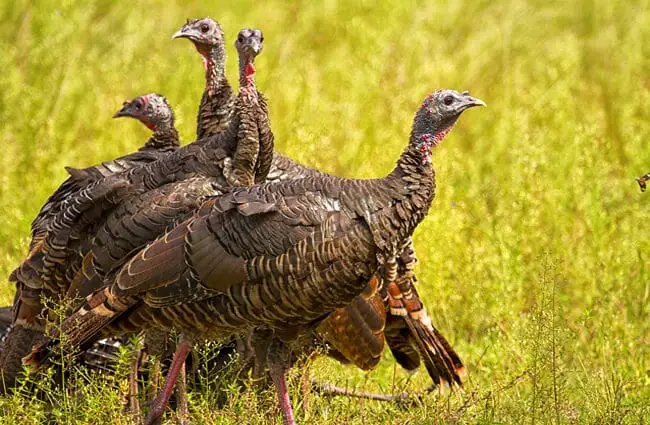
Origins and Evolution
The story of the wild turkey begins millions of years ago. While fossil evidence is still being gathered, it is believed that the wild turkey’s ancestors originated in Central America, eventually dispersing northwards. Several subspecies evolved, adapting to diverse habitats across North America. The modern domestic turkey is derived from the wild turkey, not from the Mexican wild turkey, which is a distinct species. The evolutionary path highlights the adaptability of this bird and its ability to thrive in varying environments. Early Native American populations recognized this adaptability and played a crucial role in the bird’s propagation by aiding its dispersal and utilizing it as a food source.
Habitat and Distribution
Wild turkeys are remarkably versatile when it comes to habitat. They can be found in a wide range of environments, from open grasslands and agricultural fields to dense forests and swamps. Ideally, they require a mix of these landscapes, offering both foraging areas and secure roosting sites. They are native to North America, ranging from southeastern Canada through the United States and into Mexico. The distribution of different subspecies often reflects localized adaptations to climate and terrain. For example, the Florida wild turkey, also known as the Osceola, is particularly well suited to the subtropical environments of the southeastern United States.
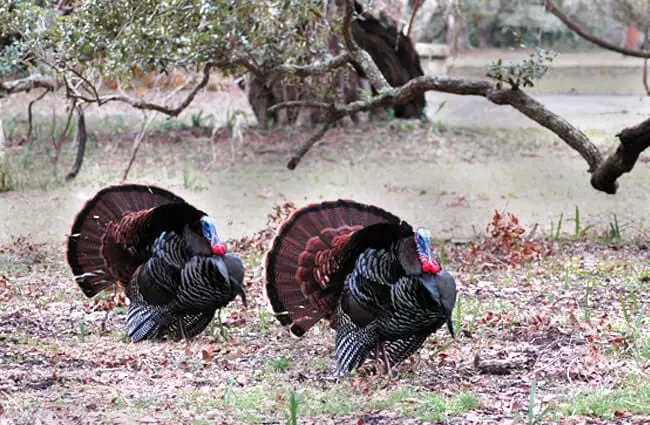
Diet and Foraging Behavior
The wild turkey is an opportunistic omnivore. Its diet varies seasonally and geographically, but generally includes a wide variety of foods. During spring and summer, insects form a significant portion of their diet, providing essential protein for growth and reproduction. As the seasons change, they shift to consuming fruits, nuts, seeds, and berries. They also forage for acorns, grains, and roots. Wild turkeys are not picky eaters and will readily consume agricultural crops when available. They use their strong feet to scratch at the ground, uncovering hidden food sources. This foraging behavior can have a noticeable impact on seed dispersal and vegetation patterns.
Social Structure and Behavior
Wild turkeys are social birds, often seen in flocks, known as “rafters.” These groups can range in size from a few individuals to several dozen. The social structure is complex, with a clear dominance hierarchy. Adult males, known as toms or gobblers, typically dominate the group. Females, called hens, are generally subordinate. The size of the rafter can fluctuate depending on the season and resource availability. During the breeding season, toms engage in elaborate displays to attract hens, including strutting, gobbling, and fanning their tails. These displays are often competitive, with multiple toms vying for the attention of a single hen.
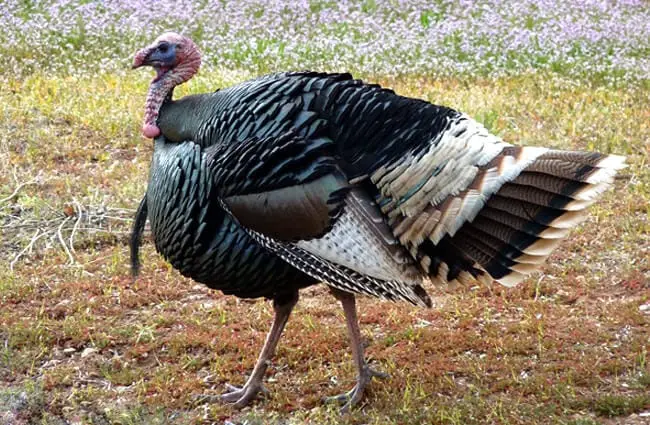
Mating and Reproduction
The breeding season typically occurs in the spring. Toms perform elaborate courtship displays, strutting and gobbling to attract hens. If a hen is receptive, she will allow the tom to mate. Wild turkeys are polygamous, meaning a single tom may mate with multiple hens. After mating, the hen will construct a ground nest, concealed within vegetation. She lays a clutch of 10 to 14 eggs, which she incubates for approximately 28 days. Once hatched, the poults (young turkeys) are precocial, meaning they are relatively independent and can follow their mother shortly after hatching. The hen provides protection and guidance, but the poults quickly learn to forage for their own food.
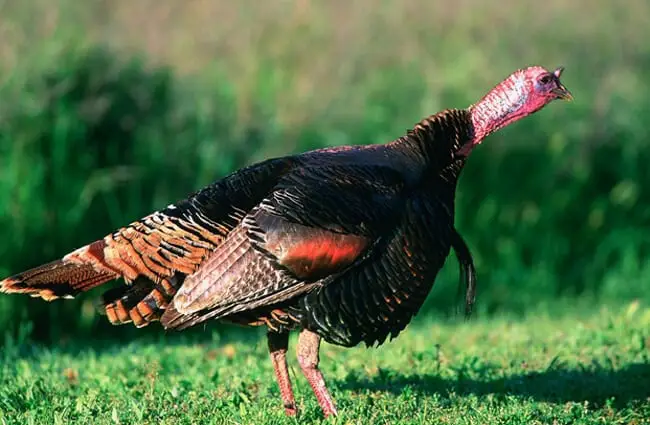
Ecological Role and Interactions
Wild turkeys play a vital role in maintaining the health of their ecosystems. As foragers, they help control insect populations and disperse seeds. Their scratching behavior also helps aerate the soil and promote plant growth. They serve as prey for a variety of predators, including coyotes, foxes, bobcats, and eagles. They often coexist with other wildlife species, such as deer and squirrels, sharing resources and contributing to the overall biodiversity of the area. Their presence or absence can be an indicator of habitat quality and ecosystem health.
Wild Turkey and Humans
The relationship between wild turkeys and humans has evolved over centuries. Native Americans traditionally hunted wild turkeys for food and feathers, utilizing all parts of the bird. Indigenous peoples of Mexico and the American Southwest were the first to domesticate the wild turkey, creating the domestic turkey that is now common in many cultures. European settlers later hunted wild turkeys for sport. Overhunting and habitat loss led to a significant decline in wild turkey populations in the early 20th century. Thanks to conservation efforts, including restoration of habitat and regulated hunting, wild turkey populations have rebounded dramatically in recent decades. Today, wild turkeys are found in all 49 states, and regulated hunting provides a sustainable harvest for many hunters.

Finding Wild Turkeys in the Wild
If you are hoping to spot wild turkeys in the wild, look for areas with a mix of forest and open land. They are most active in the morning and late afternoon. Listen for their distinctive calls, including the gobble of the tom and the clucking of the hen. Look for tracks and droppings, which can indicate the presence of turkeys in the area. Be patient and observant, and you are likely to be rewarded with a sighting of these magnificent birds.
Safety Precautions
While generally not aggressive, wild turkeys can become defensive if they feel threatened, particularly during the breeding season or when protecting their young. If you encounter a wild turkey, maintain a safe distance and avoid direct eye contact. Do not approach or attempt to feed the bird. If a turkey displays aggressive behavior, such as puffing up its feathers, lowering its head, and charging, slowly back away and seek shelter.
Caring for Wild Turkeys in Captivity
Caring for wild turkeys in captivity requires a specialized approach. They need a large, secure enclosure that provides ample space for foraging and roosting. The enclosure should include a mix of vegetation, such as trees, shrubs, and grasses, to provide cover and enrichment. Turkeys require a balanced diet that includes grains, seeds, insects, and fruits. Regular veterinary care is essential to monitor their health and prevent disease. It is crucial to minimize human interaction to avoid habituation and maintain their natural behaviors.
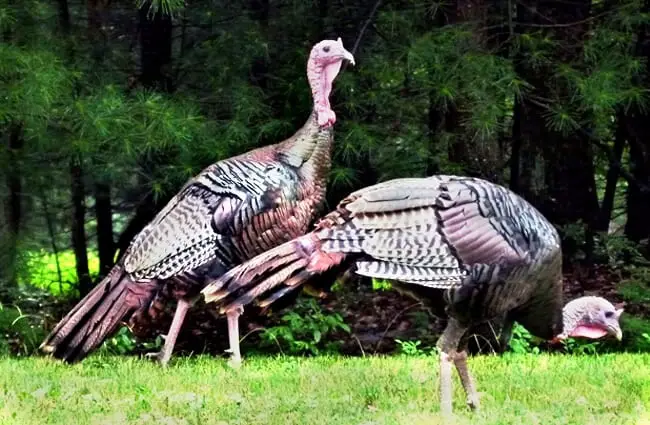
Fascinating Facts
- Wild turkeys can fly, but only for short distances and bursts of speed up to 55 miles per hour.
- They have excellent vision and hearing.
- The “beard” on a tom turkey is a modified feather.
- Wild turkeys roost in trees at night to avoid predators.
- They can distinguish between different colors, including ultraviolet light.
- The call of a wild turkey can be heard for up to a mile.
- A group of turkeys is sometimes called a rafter.
The wild turkey is a remarkable species that embodies resilience, adaptability, and ecological importance. From its evolutionary origins to its current conservation status, this bird offers a fascinating glimpse into the natural world. By understanding and appreciating the wild turkey, we can help ensure its continued survival for generations to come.

![Red Angus Closeup of a beautiful Red Angus cowPhoto by: U.S. Department of Agriculture [pubic domain]https://creativecommons.org/licenses/by/2.0/](https://animals.net/wp-content/uploads/2020/03/Red-Angus-4-238x178.jpg)




![Red Angus Closeup of a beautiful Red Angus cowPhoto by: U.S. Department of Agriculture [pubic domain]https://creativecommons.org/licenses/by/2.0/](https://animals.net/wp-content/uploads/2020/03/Red-Angus-4-100x75.jpg)

